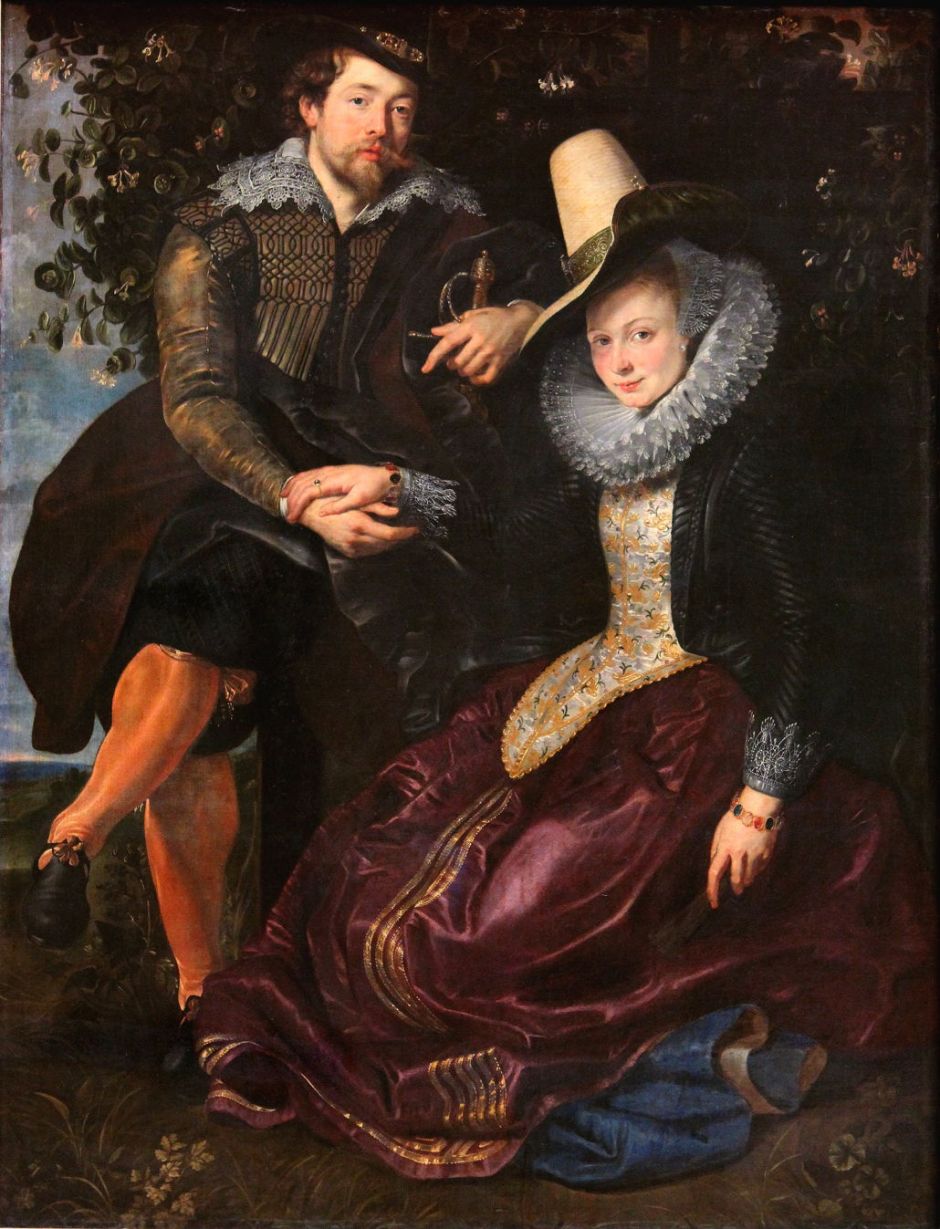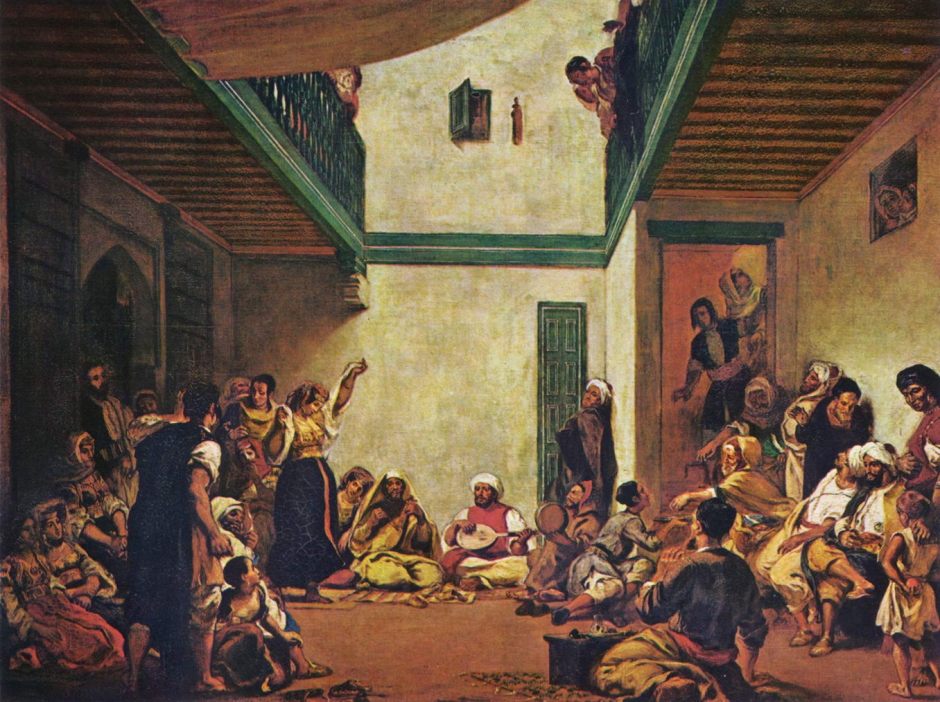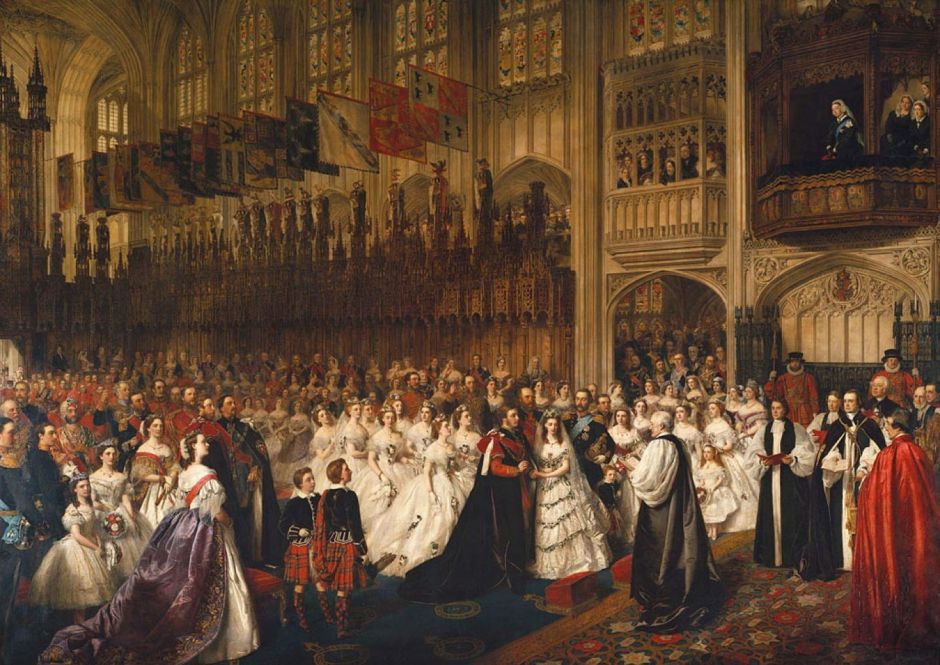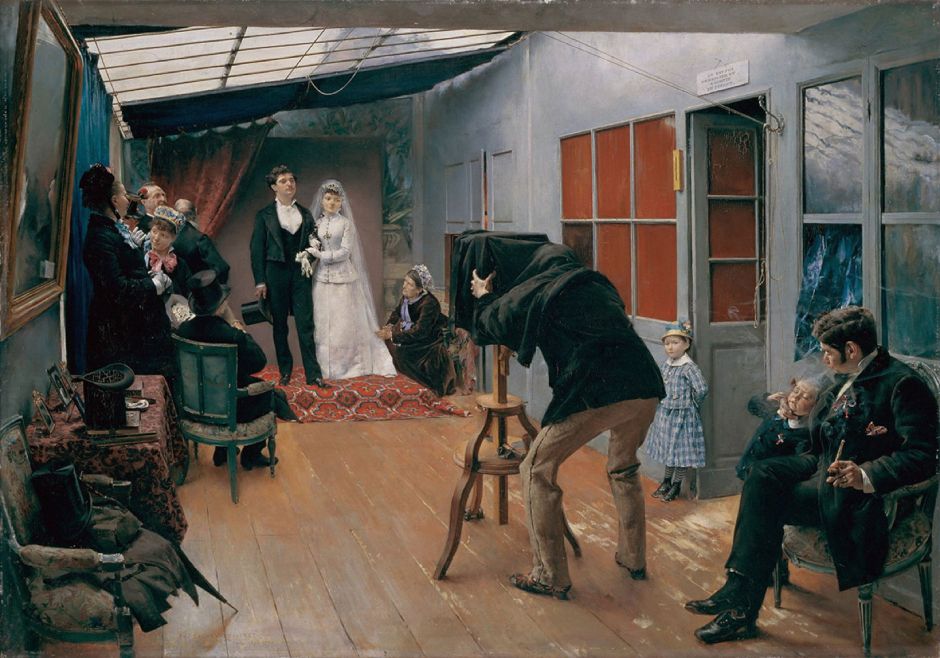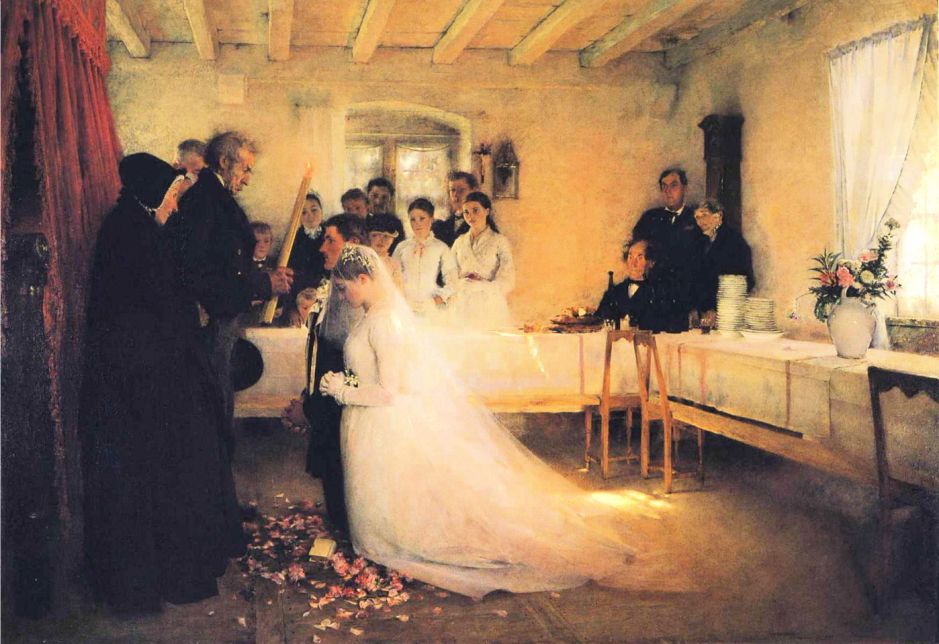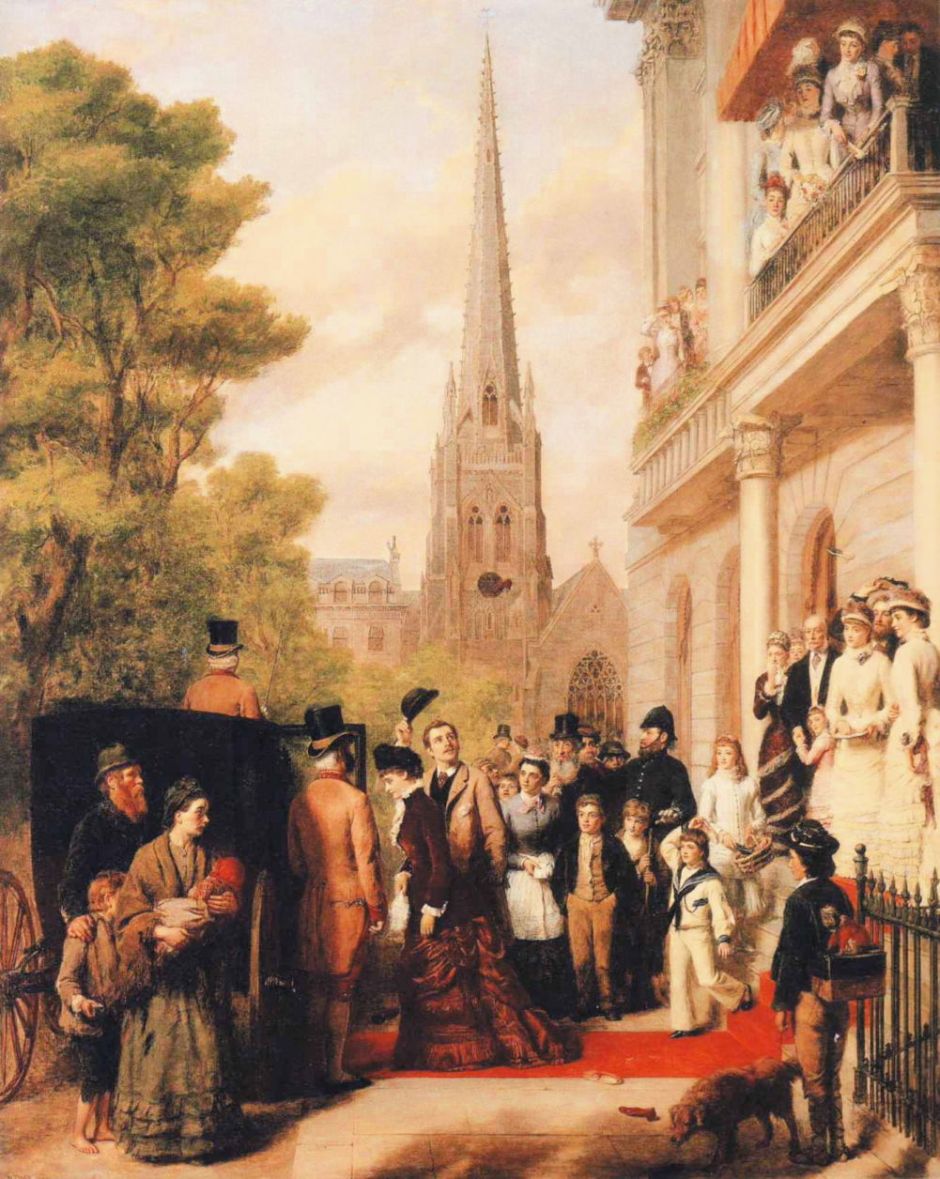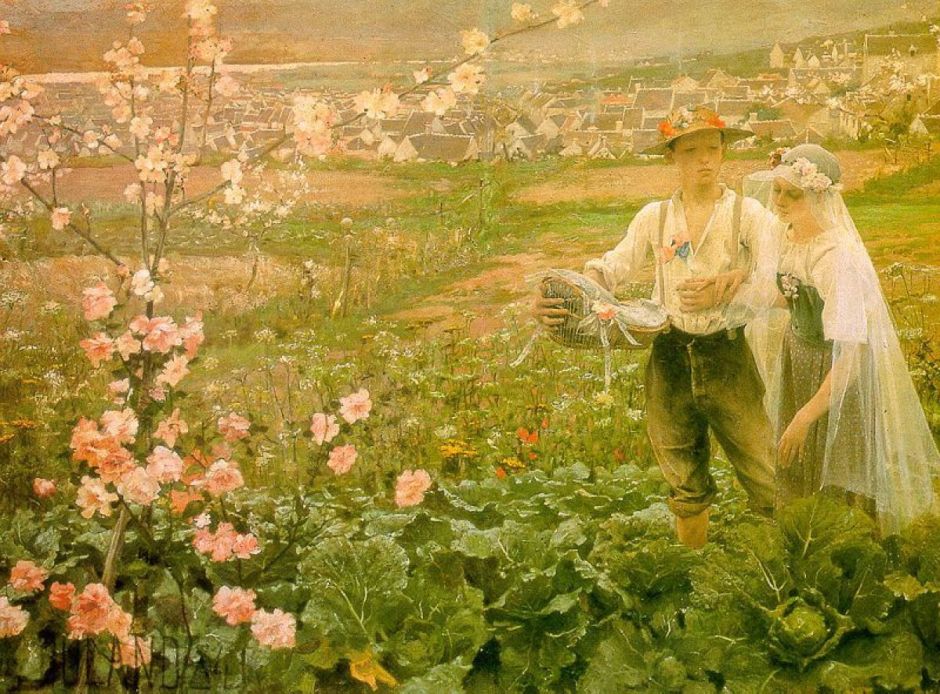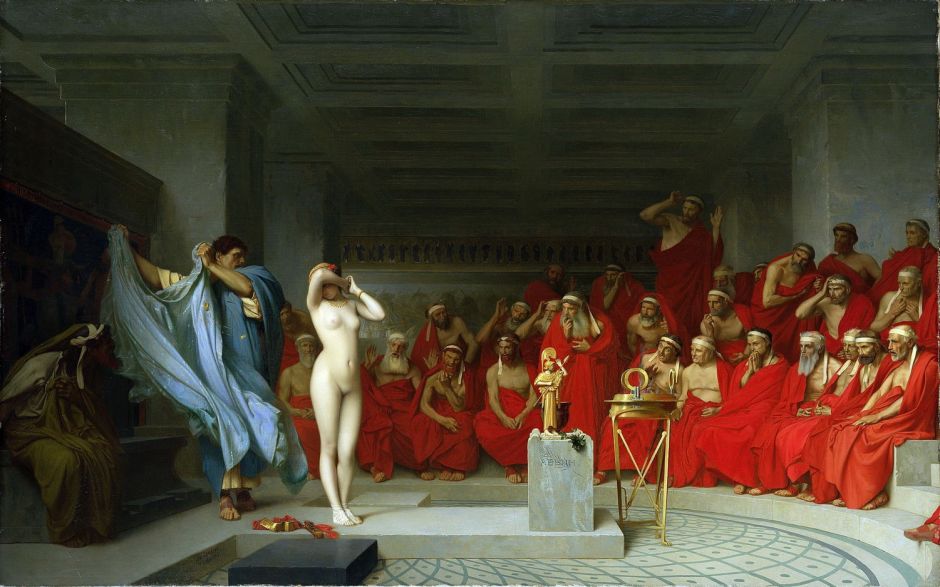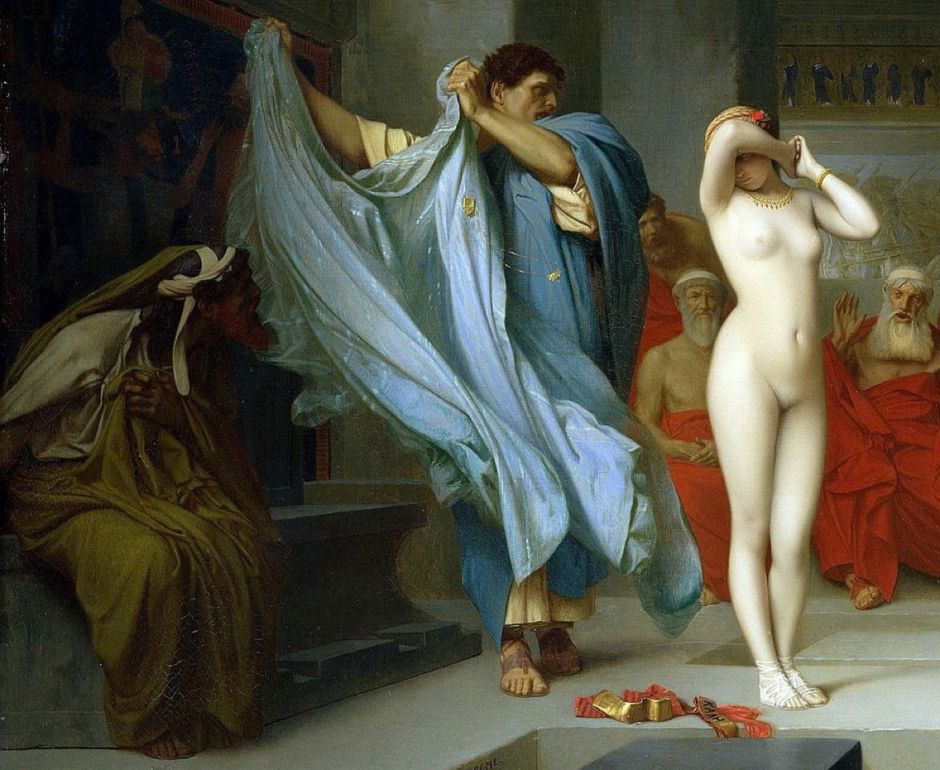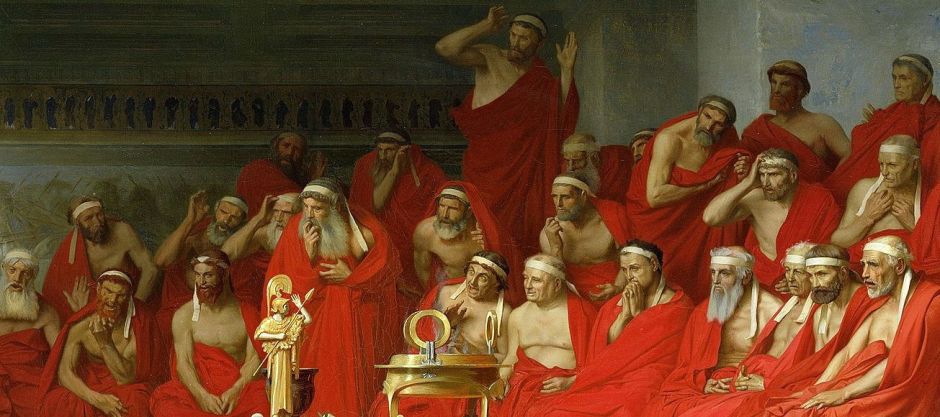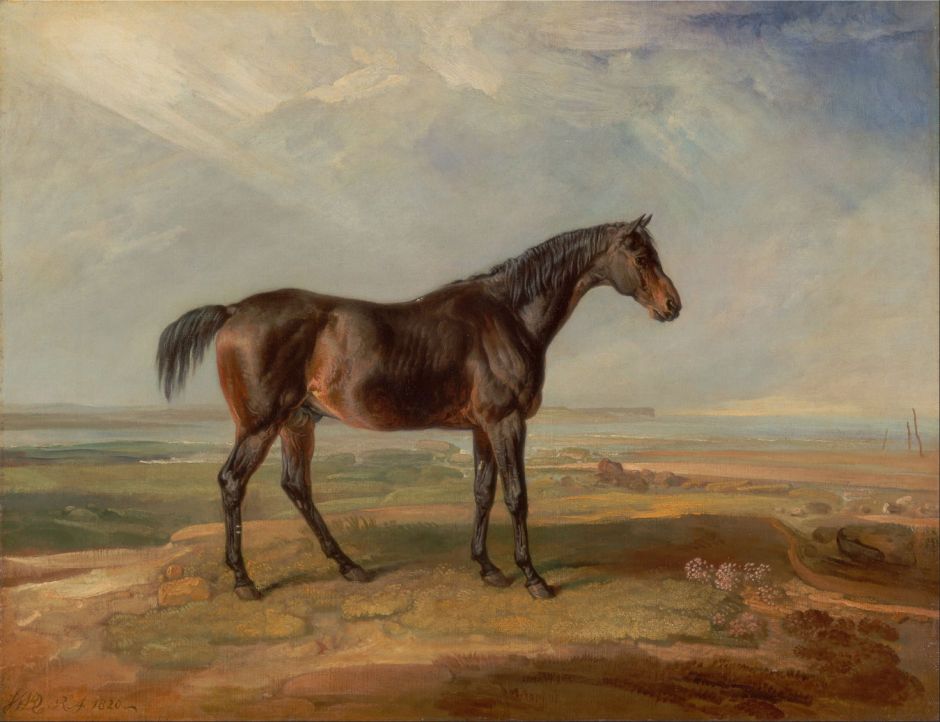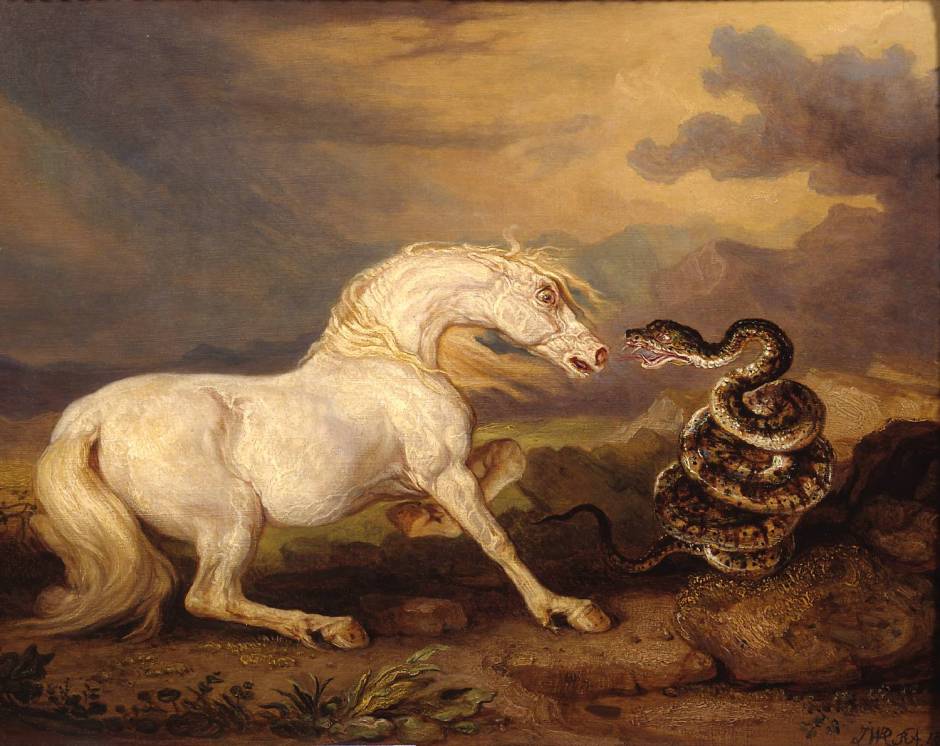Interiors by design: Revival
After the popularity of genre scenes and interiors in the Dutch Golden Age, the middle classes had less influence over themes in art until the nineteenth century.

They were then able to indulge in a few paintings and framed prints of their own, although most would have been family portraits rather than anything of greater aesthetic or cultural value. Matthäus Kern’s watercolour showing A Study Interior at St. Polten from 1837 is unusual for being an early pure interior, with no sign of figures, except in the portraits.
Then came Orientalist interiors.
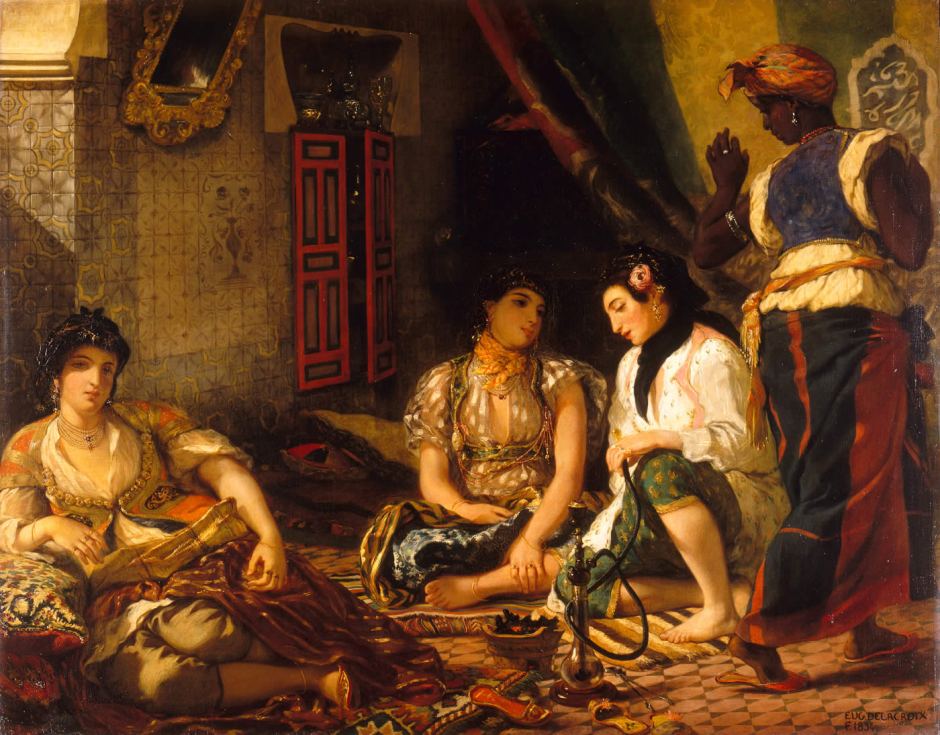
Eugène Delacroix’s Women of Algiers in their Apartment is his first Orientalist masterpiece, based in part on the watercolours and sketches made of local models during his visits to Morocco and Tangier, combined with studio work in Paris using a European model dressed in clothing the artist had brought back from North Africa. The black servant at the right appears to be an invention added for effect, as an extra touch of exoticism. The end result is harmonious, and makes exceptional use of light and colour, the fine details of the interior giving the image the air of complete authenticity.

In the mid-1850s, Théodore Chassériau’s Orientalism took the inevitable turn towards the erotic. This started with his Orientalist Interior: Nude in a Harem from 1850-52, referring strongly to Delacroix’s Women of Algiers, and equally rich in detail.
Narrative painting also started to turn away from classical themes, and became framed around open-ended narrative and ‘problem pictures’ to challenge those trying to read them.
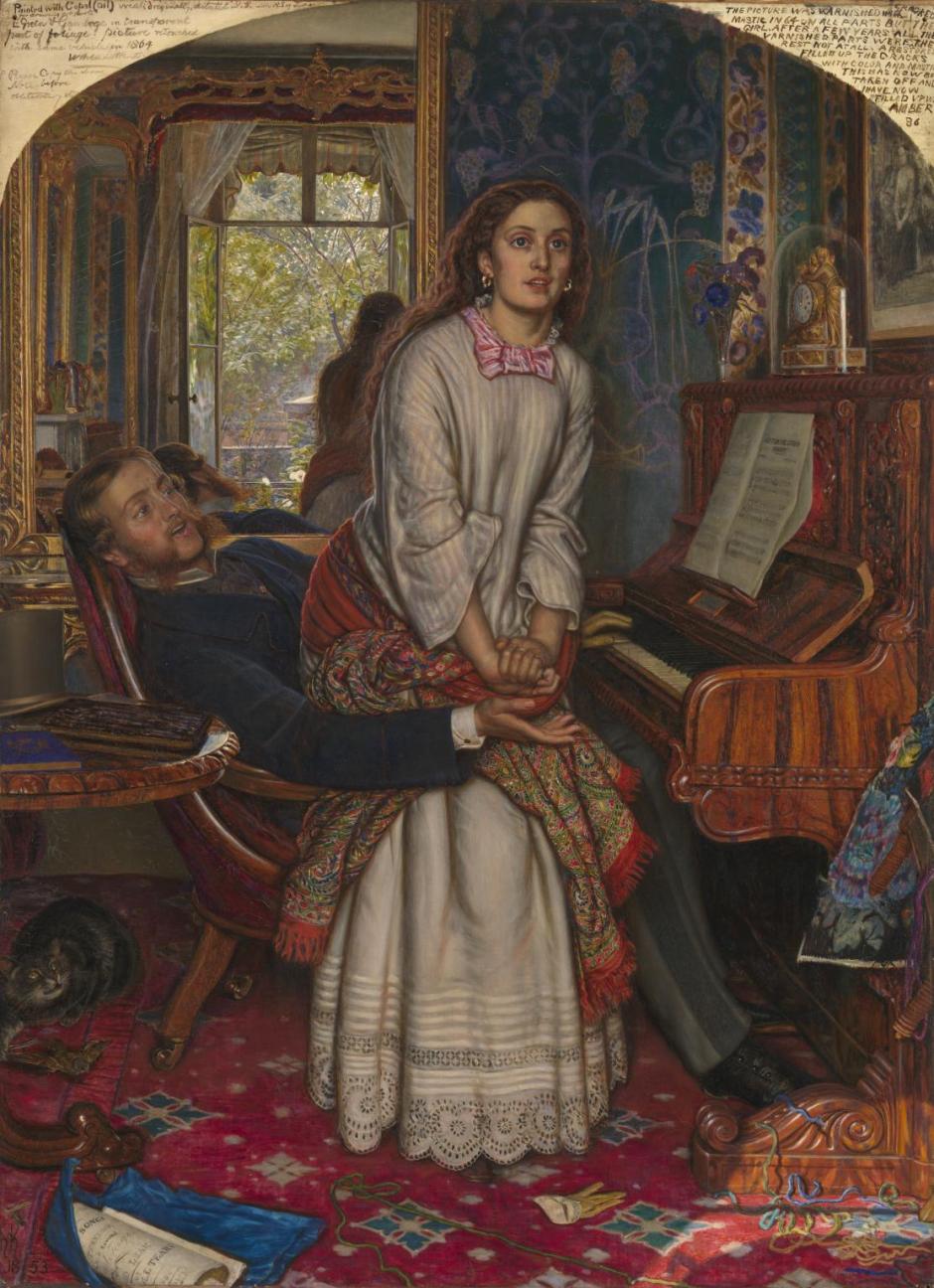
As far as I can discover, one of the earliest major paintings that intentionally lacks narrative closure is William Holman Hunt’s The Awakening Conscience, painted during the period 1851-53. As with most masterly narrative paintings, its story is assembled from a multitude of clues to be found in the image.
It shows a fashionable young man seated at a piano in a small if not cramped house in the leafy suburbs of London, in reality Saint John’s Wood. Half-risen from the man’s lap is a young woman who stares absently into the distance. They’re clearly a couple in an intimate relationship, but conspicuous by its absence is any wedding ring on the fourth finger of the woman’s left hand, at the focal point of the painting. This is, therefore, extra-marital.
The interior around them has signs that she’s a kept mistress with time on her hands. Her companion, a cat, is under the table, where it has caught a bird with a broken wing, a symbol of her plight. At the right edge is a tapestry with which she whiles away the hours, and her wools below form a tangled web in which she is entwined. On top of the gaudy upright piano is a clock. By the hem of her dress is her lover’s discarded glove, symbolising her ultimate fate when he discards her into prostitution. The room itself is decorated as gaudily as the piano, in poor taste.
The couple have been singing together from Thomas Moore’s Oft in the Stilly Night when she appears to have undergone some revelatory experience, causing her to rise. For Hunt this is associated with a verse from the Old Testament book of Proverbs: “As he that taketh away a garment in cold weather, so is he that singeth songs to an heavy heart.” Ironically, his model was his girlfriend at the time, Annie Miller, an uneducated barmaid who was just sixteen.

The only artist in the nineteenth century who seems to have painted any significant number of narrative works based on popular contemporary writers is Robert Braithwaite Martineau. The Tate Gallery has two such paintings of his: above is Kit’s Writing Lesson (1852), showing a less than memorable scene from Charles Dickens’ The Old Curiosity Shop, with its elaborately detailed interior. The other (not shown here) is Picciola (1853), based on the 1836 novel of the same name by the obscure French novelist Xavier Boniface Saintine (1798-1865).
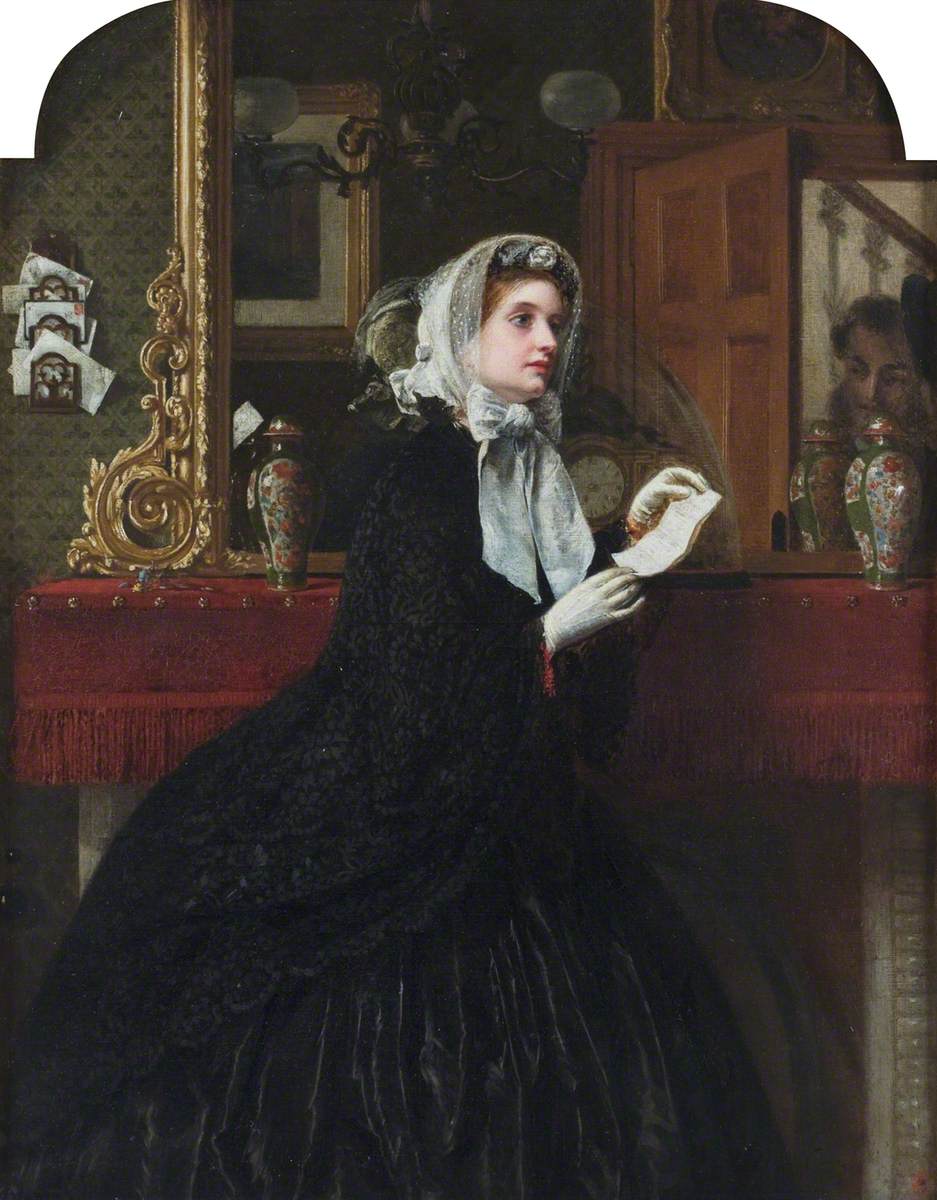
Rebecca Solomon’s Appointment (1861) appears to be another early problem picture, with a deliberately open-ended narrative set in an interior. A beautiful woman stands in front of a mirror, and looks intently at a man, who is only seen in his reflection in the mirror, and is standing in a doorway behind the viewer’s right shoulder. The woman is dressed to go out, and is holding a letter in her gloved hands. The clock on the mantlepiece shows that it’s about thirteen minutes past seven.

John Everett Millais painted his Eve of St Agnes in 1863, in the King’s Bedroom in the Jacobean house at Knole Park, near Sevenoaks in Kent. His model is his wife Effie, formerly Euphemia Gray, who married John Ruskin, and is here set in a rich period interior.
The last of these open-ended narratives set in interiors is the most puzzling, Edgar Degas’s Interior from 1868-9, also known as The Rape.

A man and a woman are in a bedroom together. She’s at the left, partly kneeling down, facing to the left, and partially (un)dressed. He’s at the right, fully dressed in street clothes, standing in front of the door, with his hands thrust deep into his trouser pockets.
The woman’s outer clothing is placed at the foot of the bed, and her corset has been hurriedly or carelessly cast onto the floor beside the bed. She clearly arrived in the room before the man, removed her outer clothing, and at some stage started to undress further, halting when she was down to her shift or chemise. Alternatively, she may have undressed completely, and at this moment have dressed again as far as her chemise.
Just behind the woman is a small occasional table, on which there is a table-lamp and a small open suitcase. Some of the contents of the suitcase rest over its edge. In front of it, on the table top, is a small pair of scissors and other items from a clothes repair kit or ‘housewife’. There’s a wealth of detail that can fuel many different accounts of what is going on in this interior.
